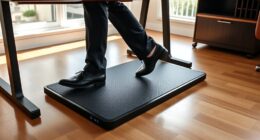Are you a singer looking for ways to enhance your vocal training? As a vocal coach, I can guarantee that incorporating vocal exercises into your practice can take your singing from good to truly exceptional.
When used correctly and consistently, these exercises provide an opportunity for singers to develop their range and reach new heights with their vocals. Plus, these techniques allow artists of all levels—from beginners to advanced—to find the perfect balance between pushing themselves further while also protecting their voices in the process.
So if you’re ready to discover how voice exercises can unlock hidden potential within yourself as a singer, then keep reading! You’ll soon learn why this approach is so important and exactly what steps need to be taken when adding vocal exercises into your routine.
Definition Of Voice Exercises
Many people think of voice exercises as tedious and boring, but I’m here to tell you that they can actually be really fun! Voice exercises are vocal warm-ups designed to help singers hone their instrument and improve their singing practice.
They focus on correcting posture and breathing technique, refining vocal range, developing resonance in the chest, building strength through scale work, and exploring various styles of singing. Voice exercises also provide an opportunity for singers to explore different elements of a song before attempting it with accompaniment or other singers. All these activities form part of any good singer’s ongoing vocal technique training.
So why should we incorporate voice exercises into our singing practice? The answer is simple: because doing so comes with myriad benefits! In the next section, let’s look at some of those advantages in more detail.
Benefits Of Voice Exercises
Voice exercises are an essential part of any singer’s practice. Not only do they help strengthen the voice, but they can also improve vocal quality and increase range. The improved range allows for higher volume as well as better control over pitch.
This type of training is invaluable to singers who want to take their craft to the next level. With regular practice, you will be able to hit notes that were once out of your reach and hold longer phrases with ease. You’ll find yourself singing more confidently and performing with greater skill than before.
In addition, voice exercises provide a great way to warm up before a performance or rehearsal so you don’t strain your vocal cords unnecessarily. This prevents fatigue and ensures that each performance or practice session is productive and enjoyable. So make sure to include voice exercises in your daily routine!
How To Warm Up Your Voice
It is essential to warm up your voice before singing. As a vocal coach, I recommend incorporating vocal warmups into your practice routine in order to maximize the benefits of your exercises and achieve optimal results. Before you begin any singing session, it’s important to do some vocal prep work in order to avoid straining or damaging the vocal cords. Here are some tips for warming up your voice:
First, start with simple breathing exercises. Breathing deeply from the diaphragm helps loosen up the muscles used for singing and prepares them for more strenuous activity later on. Additionally, practicing slow breaths through various vowel sounds can be beneficial for stretching out your range as well as helping you relax and focus on your breath control.
Second, use basic scales and arpeggios to help build strength and stamina in both high and low ranges. This will also help increase flexibility while allowing you to maintain proper technique throughout each exercise. You may want to try using different vowels when doing these exercises in addition to focusing on dynamics such as crescendo/decrescendos and slurs/legatos depending on what best suits your current needs.
Finally, incorporate light humming or lip trills into your warmup routine for further relaxation of the vocal cords as well as improved articulation of consonants during songs or phrases. These types of vocal exercises should not only help prepare you physically but also mentally since they allow time for self-reflection prior to beginning any challenging material.
With consistent practice, you’ll find that warming up properly with tailored exercises will result in an overall healthier approach towards singing which can lead to greater performance levels over time!
Types of Vocal Exercises come in many shapes and sizes – so how do we know which ones are right for us?
Types Of Vocal Exercises
Incorporating vocal exercises into your singing practice is essential for improving your voice. There are many different types of exercises that can help you build a stronger, more powerful voice. Vocal warmups will help to increase flexibility and agility in the muscles used for singing. They also provide a great way to warm up the voice before longer practices or performances.
Vocal technique exercises focus on specific techniques that can be used to develop control over pitch, volume and tonal quality. These include arpeggios, scales and intervals which allow singers to gain greater command of their instrument.
Vocal agility exercises target development in various areas including range extension, vibrato control, speed and dexterity. Learning how to switch between notes at varying lengths quickly requires repetition and consistency with these type of drills.
Lastly, vocal power exercises address dynamic changes from soft passages to louder ones as well as developing strength in high ranges without causing strain or fatigue. By doing regular rounds of these type of vocal workouts regularly you can effectively improve your overall skill level.
Through consistent practice using all of these methods singers can maximize their potential and create unique sounds utilizing all aspects of the human voice!
Breath Support Techniques
Having discussed the various types of vocal exercises, it’s time to focus on breath support techniques. It’s important for singers to develop a strong foundation in breath control and support technique when practicing singing. This is because breath awareness gives you more power to use your vocal cords effectively, thus helping you reach higher notes with ease.
When doing a vocal warmup, try taking slow deep breaths from the diaphragm while maintaining good posture and alignment. Not only will this help ensure that you have sufficient air in your lungs but also encourages proper breathing habits during practice sessions which can later be applied during performances. Additionally, sustained breaths can help strengthen your respiratory muscles and improve the sound quality of your voice.
Finally, it’s recommended that singers incorporate some physical activity into their regular vocal training routines such as yoga or pilates to further enhance their breath work capabilities. Doing so not only helps build endurance and stamina but strengthens core muscles involved in singing thereby improving overall performance.
As we move forward into our next section on posture and alignment tips, remember that having a solid understanding of how to properly breathe when singing is essential for developing healthy vocal habits!
Posture And Alignment Tips
It’s time to get down to basics: getting your posture and alignment right. To do this, you’ll need to be aware of the signals your body is sending. Just like a good old-fashioned road trip, if we don’t know where we’re going, it’ll take us much longer to get there!
Tips for Good Posture
- Stand tall but relaxed with feet shoulder width apart
- Keep weight evenly distributed on both feet
- Maintain a neutral spine position without arching or slouching
- Arms should hang naturally at sides
- Shoulders should stay low and relaxed away from ears
- Neck muscles should remain long and open – not stiff or tense
Alignment Tips
- Head placement should feel as though it’s balanced atop cervical vertebrae in neck
- Avoid straining by keeping chin parallel to floor instead of tilting up/down forwards or backwards
- Visualize that your sternum (breastbone) is pointing upward towards ceiling while maintaining proper vocal posture. This will help ensure head & throat are properly aligned so sound can travel efficiently through nasal & oral cavities. Lastly, make sure tongue remains low in mouth when singing; this helps keep airways clear for optimal resonance & volume control.
By focusing on these simple tips, you can set yourself up for success before even starting to sing. It’s all about creating an environment where the voice feels comfortable and free to express itself– no matter what range you may find yourself exploring!
Finding A Suitable Range For Singing
Now that you have the posture and alignment for singing down, it’s time to find a suitable range for your voice. Finding your vocal range is essential in order to determine which notes fit best with your particular instrument. Knowing your range will allow you to create songs and melodies with ease, as well as give you insight into which repertoire may work better for you.
The first step in finding your vocal range is figuring out what type of voice part works best with your singing style – whether you’re looking at soprano, alto, tenor or bass parts. Next, practice scales and arpeggios starting on the low end of that part until reaching an uncomfortable point where vibrato cannot be maintained any longer. This means you have found the lower limit of your voice’s capability; now move up one octave higher than this note and repeat the process until again reaching an uncomfortable point where vibrato cannot be sustained anymore – this will be your upper range limit. Repeat these steps several times so that you can confidently identify when a note lies within your comfortable singing range.
It is also important to remember that everyone has different ranges due to varying physical characteristics such as body size, muscle tension and breath support capabilities, all of which affect how far we are able to extend our voices comfortably. Once familiarized with their own voice limits, singers can then begin practicing scales and arpeggios within those boundaries in order to maintain healthy technique while exploring other potential areas for development. With careful practice and guidance from experienced professionals, singers can expand upon their existing comfort zone without sacrificing overall sound quality or putting too much strain on their bodies. As they gain confidence in themselves and learn more about their unique instrument over time, they will eventually become capable of performing music pieces both inside and outside their initial comfort zone with greater ease and finesse!
To ensure proper development while expanding vocal possibilities requires diligent practice including warm-up exercises tailored specifically towards each singer’s individual needs. By doing this regularly alongside vocal coaching sessions given by knowledgeable professionals who understand the complex structure behind human anatomy, singers can find success in discovering new depths within their personal vocal ranges!
Practicing Scales And Arpeggios
Are you looking to improve your singing skills through incorporating vocal exercises into your practice? Scales and arpeggios are great tools for training the voice, as they allow singers to develop their range, flexibility, intonation and control. As a music voice coach, I recommend that all singers use these exercises regularly in order to build a strong foundation of technique.
When practicing scales and arpeggios, it’s important to start slow at first – focus on accuracy rather than speed. This will help ensure that the notes being sung remain clear and consistent throughout each exercise. Additionally, be sure to pay attention to breath support while doing these exercises; breathing efficiently is key when it comes to improving vocal stamina and endurance. Lastly, don’t forget about listening! Listen carefully with every note you sing so you can accurately identify any discrepancies or areas where improvement may be necessary.
Practicing scales and arpeggios is an essential part of becoming a better singer – but there are other ways you can take your singing practice up a notch too! Utilizing props such as visual aids or rhythm devices can help keep things interesting while learning more complex techniques. The next section will discuss how using visuals and props can aid in strengthening your singing routine.
Using Props And Visuals To Aid Your Practice
As a singer, you may find that incorporating props and visuals into your practice can be an effective way to build vocal strength. Visuals such as scales or diagrams of the vocal apparatus can help with posture alignment, breath support and voice exercises.
Additionally, props like slinkies or hand weights can assist in providing resistance for warm-up exercises and vocal challenges. You can even use a visual aid to track progress over time – this could include marking how many runs you are able to do within a certain amount of time, or jotting down notes on how far up the scale you were able to reach during your last practice session. By using props and visuals, you will be better able to assess your own performance and chart out improvement milestones along the way.
This type of structured approach allows singers to learn at their own pace while still pushing towards greater heights in their singing ability. As well as boosting confidence levels when mastering new techniques and improving existing ones! Now it’s time to analyze your performance – what areas need more work? What sections have improved? Where have successes been achieved? All these questions should inform where you focus your attention next in order to keep progressing forward.
Analyzing Your Performance
Now that we’ve discussed the importance of using props and visuals to aid your singing practice, let’s move on to analyzing your performance. After all, what good is a skill if you can’t recognize whether or not it has improved?
Vocal analysis helps singers identify areas for improvement and gives them feedback so they can gauge their progress. Performance assessments provide an honest assessment and help pinpoint exactly where improvements need to be made in order to reach desired goals. Without vocal technique understanding and self-awareness, improving one’s singing may feel like trial by error – but with vocal analysis, there are specific steps which can be taken towards furthering the singer’s development.
The first step in this process should always begin with listening: listen carefully to yourself as you sing and take note of any mistakes or inconsistencies. Once you become aware of these issues, ask yourself questions such as “What could I do differently? What did I do well? How could my voice have been stronger/more clear/etc.?”
This will give you valuable insight into how you sound when performing so that you can make adjustments accordingly. Additionally, don’t just rely on your own ears; enlist the help of others who can provide outside perspectives and constructive criticism about your singing. With both internal and external evaluation combined, any singer will find themselves more capable of making informed decisions regarding their vocal development.
Being able to accurately assess oneself is essential for success in music – without it, growth becomes stagnant rather than progressing forward. Understanding strengths and weaknesses comes from experience with personal reflection coupled with objective observations from reliable sources. Achieving higher levels of performance through consistent practice requires being receptive to both verbal and nonverbal forms of singing feedback – effectively utilizing this information will ensure steady advancement over time!
Frequently Asked Questions
How Often Should I Practice Voice Exercises?
When it comes to vocal practice, one of the most important things is finding a regular routine and getting into the habit of voice warm-up exercises. How often should you practice voice exercises? It really depends on your experience level, but there are some general guidelines that I suggest for all singers:
- Practice 3 times per week at minimum
- Incorporate different training techniques in each session
- Focus on breath control and resonance during each exercise
- Increase difficulty as you become more comfortable with your current skill level
The key here is to find an exercise routine that works best for you while also challenging yourself as you progress. With this type of approach, you’ll be able to make consistent strides forward in your singing technique and start hearing real results faster.
As a music voice coach, my goal is always helping singers discover their unique abilities so they can continue learning and growing. To do this effectively requires a personalized approach tailored just for them—including the frequency of their vocal exercises.
So don’t be afraid to experiment until you find what works best! That way, when it comes time to perform or record, your confidence will soar knowing you gave every ounce of effort into perfecting your craft.
What Is The Best Way To Improve Vocal Range?
Improving your vocal range is like climbing a mountain of notes – difficult yet achievable with the right techniques and practice. For those seeking to expand their singing range, there are numerous exercises that can help you reach new heights in no time.
Vocal range improvement relies on certain key elements such as proper warm-up and strengthening exercises. As a music voice coach, I’m here to provide tips on how to make your vocal range grow.
Start by warming up every day before you sing or perform any exercise for vocal range improvement. This will give your muscles an opportunity to stretch and get ready for activity so they don’t strain during harder tasks. Singing scales is also essential; it helps build strength in the regions where we need it most when expanding our vocal range. Additionally, challenging yourself by attempting songs or styles outside of your comfort zone may be beneficial in improving singing range.
Finally, breathing control plays a major role in developing our vocal ranges since breath support gives us power over higher and lower pitches alike. To improve this aspect of performance, try practicing diaphragmatic breathing – inhaling deeply from the stomach instead of shallowly from the chest – then adding sound (humming) into the exhale while practicing vowels at different pitches until you feel comfortable with them all. With the consistent effort put toward these goals, soon enough you’ll find yourself able to hit notes far beyond your wildest dreams!
How Do I Know If I Am Singing Correctly?
Figuring out if you’re singing correctly isn’t as easy as it sounds. It takes practice to really hone in on the right vocal technique and develop your voice range. The best way to ensure that you are singing with correct form is to have a teacher or professional coach who can assess your voice and provide feedback for improvement.
Some key elements of vocal training will help guide how you sing. First, make sure your posture is upright and relaxed. Secondly, focus on breathing from your diaphragm so that your sound has more power behind it. Thirdly, stay hydrated throughout your practice sessions; dehydration can cause fatigue and limit the quality of your performance.
Finally, warm up properly before each session so that you don’t strain your vocal cords.
In addition to these basics, there are some specific tips for improving vocal range:
- Work on different exercises every day to keep things interesting and challenging
- Practice scales slowly at first until they become second nature
- Experiment with harmonies – this helps build confidence when performing live
- Incorporate voice exercises into regular practice sessions – these can include lip trills, vowel slides, humming etc., which improve breath control and resonance
By following these steps, singers can easily determine whether they’re singing correctly or not! With consistent practice and guidance from an experienced mentor or teacher, anyone can master their own unique style of singing while pushing themselves towards greater heights in terms of vocal ability.
Can I Do Voice Exercises Without A Vocal Coach?
It’s true that having a vocal coach can be incredibly helpful when it comes to honing your singing techniques and improving your voice. But the truth is, you don’t necessarily need one to do effective voice exercises. Take John Smith for example; he had never been able to hit the high notes in his favorite songs, but after just two weeks of properly incorporating voice exercises into his practice routine without a vocal coach, he found himself hitting those tricky pitches with ease!
So how does someone go about doing voice exercises without a professional? Well, plenty of online resources provide step-by-step guidance on practice techniques tailored specifically to each individual’s needs.
For instance, many websites offer tutorials on proper warm up and cool down exercises as well as specific drills such as lip rolls or trills. Additionally, some sites even feature video demonstrations from experienced vocalists so you can get an idea of what executing these practices looks like in real time.
Ultimately, no matter if you have a coach or not – taking the time to incorporate regular voice exercises into your practice will yield tremendous results and help you become a better singer overall. So why wait? Start challenging yourself today by trying some new exercises and seeing where they take your sound!
Are There Any Physical Exercises I Can Do To Help My Singing?
Are you wondering if you can do any physical exercises to help your singing? Well, I’m here to tell you that the answer is a resounding yes! As a music voice coach, it’s my job to make sure singers know the best exercises they can do to improve their vocal performance.
When it comes to singing exercises, some of the most common ones include vocal warmups and posture exercises. Vocal warmups involve practicing scales and arpeggios in different ranges and with various dynamics – all designed to keep your voice limber and ready for whatever song or style of singing you’re going into. Posture exercises also focus on keeping your body relaxed while maintaining proper alignment; this will ensure that you don’t strain your body as you sing.
In addition to these physical exercises, breathing exercises and vocal strengthening drills can also be beneficial for improving your singing technique. Breathing exercises such as diaphragmatic breathing allow singers to access more air when needed, whereas vocal strengthening drills like lip trills help strengthen muscles used in singing so they don’t tire out quickly during long rehearsals or performances.
All of these physical techniques combined can help create an environment where singers feel safe exploring their range without fear of injury or fatigue – which ultimately leads to better overall performance quality. So don’t hesitate – incorporate these types of physical exercises into your practice today!
Conclusion
As a music voice coach, I have seen first-hand the difference that incorporating vocal exercises into your practice can make. It is important to remember that if you want to improve your singing range and technique, regular exercise is key. Make sure to give yourself enough time in each session for proper warmups and cool downs – this will help keep your muscles healthy and responsive while reducing strain on your vocal cords.
When it comes to technical accuracy, never be afraid to ask questions or get feedback from an experienced teacher or mentor. Learning how to correctly align posture and breathing with sound production can make all the difference when performing live or recording in the studio. With patience and dedication, anyone can become a better singer by practicing their voice exercises regularly!
Finally, don’t forget about physical exercises too! Stretching and strengthening your core muscles helps with breath control which is vital for any style of singing. Taking care of your body as well as developing strong technique are essential components of creating powerful performances with heart-felt emotion every time you sing.
So there we have it: tips for incorporating voice exercises into your singing practice! Remember that consistency is key—the more often you practice these techniques, the faster you’ll see results. Good luck on your journey towards becoming a better singer!










